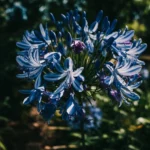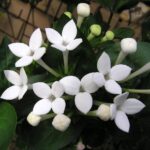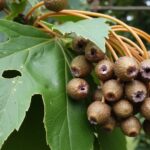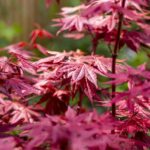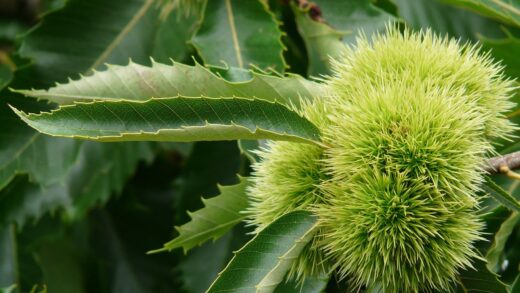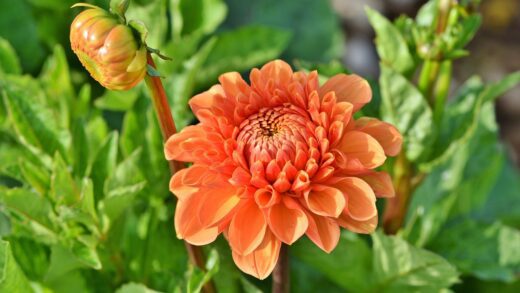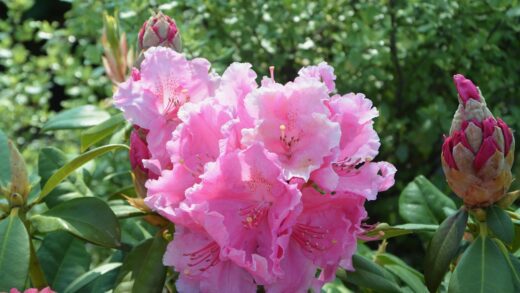The japanese lady fern is a low-maintenance plant that does not require regular, complex pruning in the way that many shrubs or flowering perennials do. Its natural, graceful form is one of its key attributes, and heavy-handed pruning is unnecessary and can be detrimental to its appearance. However, some timely trimming and cutting back, often referred to as “grooming,” is beneficial for maintaining the plant’s health, vigor, and aesthetic appeal. The primary goals of any cutting are to remove dead or damaged foliage and to prepare the plant for its seasonal transitions, from the active growth of summer to the dormancy of winter.
Unlike plants that are pruned to encourage branching or flowering, the pruning of a fern is purely for sanitation and cosmetic purposes. Each frond grows directly from the rhizome, and cutting a frond will not stimulate new growth from that point. New fronds will only emerge from the crown of the plant during its active growth period in the spring and early summer. Therefore, the approach to pruning should be one of selective removal rather than overall shaping.
Throughout the growing season, from spring to fall, it is good practice to periodically inspect the fern for any fronds that have become unsightly. This could include fronds that have been damaged by wind, pests, or accidental breakage, as well as those that are yellowing or browning prematurely due to age or minor stress. Removing these fronds keeps the plant looking tidy and can also help to prevent the spread of any potential fungal issues.
The most significant “pruning” event for this deciduous fern is the annual cutting back of all its foliage as it enters dormancy. This is a more substantial task but is straightforward and essential for garden hygiene and preparing the plant for a healthy start the following spring. Understanding the correct timing for this annual cutback is key to supporting the fern’s natural life cycle and ensuring its long-term well-being in the garden.
Grooming during the growing season
Maintaining the pristine appearance of a japanese lady fern during the growing season involves minimal but regular grooming. The main task is to remove any individual fronds that have become damaged or have started to decline. A frond may become broken by strong winds, passing animals, or garden activity. It is best to remove these broken fronds promptly, as they can detract from the plant’s graceful silhouette and may provide an entry point for diseases.
More articles on this topic
To remove a damaged frond, use a pair of clean, sharp scissors or small pruning shears. Follow the stem of the undesirable frond all the way down to its base, where it emerges from the crown of the plant. Make a clean cut as close to the base as possible without injuring the crown or any adjacent emerging fiddleheads. This clean removal is more attractive and healthier for the plant than simply breaking the frond off by hand.
It is natural for some of the oldest, outer fronds to begin to yellow and die back as the season progresses, even on a perfectly healthy plant. This is part of the normal life cycle of the foliage. Removing these senescing fronds keeps the plant looking fresh and lush. This simple act of tidying directs the plant’s energy towards supporting its healthy, vibrant fronds and new growth rather than maintaining dying foliage.
This process of grooming should be done on an as-needed basis. It may only be necessary to do a quick check and trim every few weeks. Regular observation is the best guide. By staying on top of this simple task, you ensure that your japanese lady fern remains an elegant and unblemished focal point in your shade garden throughout the spring and summer months.
The annual cutback: Timing and technique
As a deciduous fern, the japanese lady fern will naturally die back to the ground each winter. The main decision for the gardener is not whether to cut it back, but when. There are two primary schools of thought on the timing of the annual cutback: cutting back in the autumn after the plant has gone dormant, or waiting until late winter or early spring before new growth begins. Both approaches have their merits.
More articles on this topic
Cutting the fern back in the autumn, after the fronds have been completely killed by a hard frost and have turned brown, results in a tidier-looking garden bed over the winter. This can be appealing for gardeners who prefer a clean and manicured appearance during the dormant season. To do this, simply use shears to cut all of the dead fronds down to about 1-2 inches (2-5 cm) from the ground. The dead foliage can then be composted.
However, many experienced gardeners advocate for waiting until late winter or early spring to perform the cutback. Leaving the dead fronds in place over the winter provides a natural layer of insulation for the crown and rhizomes, protecting them from harsh winter cold and desiccating winds. The collapsed fronds also help to trap snow, which is an excellent natural insulator. This approach can improve the plant’s winter hardiness, especially in colder climates.
If you choose to wait until spring, the cleanup should be done before the new fiddleheads begin to emerge. As soon as you see the first signs of the ground swelling or the tips of the new crosiers pushing through, it is time to carefully remove the old, dead foliage from the previous year. This clears the way for the new growth to emerge unimpeded and receive full access to sunlight and air circulation.
Pruning for disease and pest management
While the japanese lady fern is generally resistant to diseases, pruning can be an important tool for managing any issues that do arise. If you notice fronds with signs of fungal leaf spot or other foliar diseases, it is wise to remove these affected fronds immediately. This practice, known as sanitation, helps to reduce the number of fungal spores in the vicinity and can prevent the disease from spreading to healthy parts of the plant or to neighboring plants.
When removing diseased foliage, it is crucial to use clean and sterilized pruning tools. You can sterilize your shears by wiping the blades with rubbing alcohol or a 10% bleach solution between cuts, and especially before moving on to another plant. This prevents the accidental transfer of pathogens from one plant to another. Diseased foliage should not be added to your home compost pile; it is better to dispose of it in the trash to avoid reintroducing the pathogens to your garden.
Pruning can also help manage pest infestations. If you find a frond that is heavily infested with pests like aphids or scale, sometimes the simplest and most effective solution is to remove that entire frond. This can quickly reduce the pest population and may be sufficient to control a minor infestation without the need for any chemical sprays.
Furthermore, proper pruning can contribute to disease prevention. At the beginning of the season, when you perform the annual cutback, you are removing old plant material that could harbor overwintering pest eggs or fungal spores. By starting the season with a clean crown, you are reducing the likelihood of last year’s problems recurring and are promoting a healthier growing environment with better air circulation around the base of the plant.
Pruning and plant division
Pruning is an integral part of the process of dividing the japanese lady fern. When you decide to divide a mature clump in the early spring, it is often helpful to first cut back any remaining dead foliage from the previous year. This gives you a clear view of the crown and the structure of the rhizomes, making it easier to see where to make your divisions and to identify the healthy growing points.
After you have lifted the clump from the ground and separated the rhizome into smaller sections, you may need to do some additional trimming. Carefully inspect each new division and prune away any parts of the rhizome that are dead, soft, or rotting. Also, trim off any broken or damaged roots to encourage the growth of new, healthy roots once the division is replanted. This cleanup ensures that each new plant has the best possible start.
Even after replanting the divisions, some light pruning may be beneficial. If the divisions have some unfurling fronds, they may wilt from transplant shock as the reduced root system struggles to support them. Some gardeners choose to trim these initial fronds back by about half to reduce the demand on the roots and encourage the plant to focus its energy on establishing a new root system.
Ultimately, the act of division itself is a form of renewal pruning for the entire clump. By removing the older, less productive central part of the rhizome and replanting the vigorous, younger outer sections, you are rejuvenating the plant. This process ensures that the fern remains healthy and productive for many years, preventing it from becoming weak and sparse in the center as it ages.
📷: David J. Stang, CC BY-SA 4.0, via Wikimedia Commons








